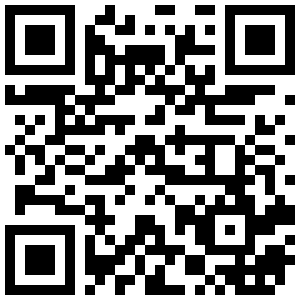
LAYTON OFFICE
1834 E 3100 N
Layton, UT 84040
Home • Layton Personal Injury Lawyer • Layton Car Accident Lawyer
Car accidents can cause devastating injuries, including traumatic brain injuries, spinal cord injuries, severe burns, fractures, and other disabling injuries that change your life forever. When the unthinkable happens, you can count on our robust team of Layton car accident lawyers to aggressively protect your rights at every stage of the legal process so you can recover compensation for your pain and suffering, medical bills, and lost wages.
Table of Contents
- Why Choose Feller & Wendt, LLC for Your Car Accident Claim in Layton, Utah
- Our Car Accident Verdicts & Settlements
- What Our Utah Car Accident Clients Say
- Car Accident Compensation Available in Layton Personal Injury Cases
- How Long Do I Have to File a Claim?
- Car Accident FAQs
- Injured in a Layton Car Accident? Schedule Your Free Consultation Today
Why Choose Feller & Wendt, LLC™ for Your Car Accident Claim in Layton, Utah
Our energetic, trial-tested Layton personal injury lawyers are dedicated to winning your battle when someone else’s negligence causes harm. When you choose us, you are not just a client but a part of our family. We will give you our personal cell phone numbers and stand by you through every step of the litigation process. If your case goes to trial, we will run focus groups to ensure you receive the best result. Attorney Matt Feller grew up in Layton, and we understand the legal climate and the concerns of people in our community.
“When life knocks you down, we’re there to help you rise again.”
– Matt Feller
Experience matters in car accident litigation. Insurance companies are some of the wealthiest in the world, and they hire teams of lawyers, adjusters, and staff to help them pay as little as possible on your claim. We bring a combined 70 years of proven experience to the table. With our Layton car accident law firm on your side, you will have your own powerhouse of attorneys and legal staff to level the playing field so you receive fair compensation. Our success rate is 99 percent.
Our Car Accident Verdicts & Settlements
We have recovered over $85 million in compensation for our clients, including numerous successful car accident case results, such as:
- $2.48M truck accident compensation
- $450,000 truck accident compensation
- $300,000 car accident compensation
- $280,000 car accident compensation
Testimonials from our Utah Injury Clients
Car Accident Compensation Available in Layton Personal Injury Cases
If you have been injured because of someone else’s carelessness in a car accident, you may be entitled to economic and non-economic damages. Economic damages are compensation for your financial losses, including property damage, medical bills, lost wages, and future losses, such as the cost of ongoing medical care and lost earning capacity. Non-economic damages are compensation for your intangible losses, such as:
- Pain and suffering
- Mental anguish
- Loss of bodily functions
- Loss of enjoyment of life
- Scarring and disfigurement
- Inconvenience
- Loss of society
- Loss of consortium
In limited cases, you may also be eligible for punitive damages. To qualify, you must have clear and convincing evidence that the other driver’s conduct was malicious, willful, intentionally fraudulent, or blatantly reckless. However, if you were struck by a drunk driver, a different standard applies under § 78B-8-201 of the Utah Code.
Damages Available When a Loved One Dies in a Car Accident
If your loved one died in a car accident, our Layton wrongful death lawyers can help you pursue economic, non-economic, and punitive damages in a wrongful death claim.
Economic damages in a wrongful death claim may include funeral expenses, medical expenses, lost inheritance, loss of estate value, and your loved one’s probable lifetime earnings had the accident not occurred. Non-economic damages in a wrongful death claim include emotional losses, such as loss of companionship, loss of parental guidance, mental suffering, and loss of love and affection.
How Much Compensation Can I Receive for a Car Accident in Layton?
While many states impose limits on the amount you can recover for car accident injuries, there are no damage caps in Utah for car accident claims. The amount you recover for your car accident is only limited by the unique facts of your case, the weight of the evidence, and the skill of your Layton car accident attorney. Other factors that play a significant role in determining compensation include:
- How severely you are injured
- The cost of your medical care
- The length of your recovery
- Whether your injuries are permanent
- Your earning capacity before and after the accident
- The severity of your pain and suffering
Our commitment to justice is unwavering, and we are dedicated to helping you get the best result possible.
How Do Utah’s No-Fault Laws Affect Car Accident Compensation?
Utah’s no-fault insurance laws will impact the claims process, but they do not stop you from recovering compensation from the at-fault driver when your injuries are severe. Every driver in Utah must carry the following insurance:
- Personal injury protection of at least $3,000
- Bodily injury coverage of at least $30,000 per person per accident
- Bodily injury coverage of at least $65,000 per accident
- Property damage liability of at least $25,000
When you are in an accident, you must file your claim with your no-fault insurance regardless of who was at fault. The state insurance law allows you to file a claim against the other driver’s insurance if your medical expenses are higher than your no-fault insurance coverage limits or if the accident led to death, dismemberment, permanent disability, permanent disfigurement, or at least one fractured bone.
How Long Do I Have to File a Claim?
The auto accident statute of limitations in Utah gives you up to four years to file a car accident lawsuit, but this does not mean you should wait to contact an attorney. Contact our nationally-recognized car accident lawyers in Layton as soon as possible to start your claim.
If you file your lawsuit after the statute of limitations expires, you get nothing. The insurance company knows this. If you are running out of time, the company will likely employ stall tactics or lowball you. You may hope your injuries will improve if you wait, but it is often impossible to predict the long-term impacts of a car accident.
By contacting our attorneys as soon as possible, you allow us to access important evidence that may only be available for a short time. We will not move your lawsuit forward until we determine the full extent of your compensable damages. We will go right to work investigating your accident, gathering evidence, and building your case.
Car Accident FAQs
Can I Represent Myself?
Technically, you can represent yourself after a car accident, but we advise against it. Insurance companies hire lawyers and adjusters who are skilled negotiators with superior knowledge of the law. When you are suffering injuries and wondering how you will pay the bills, the insurance company can use your sense of urgency against you.
Most insurance companies hire specially trained adjusters to work with individuals representing themselves and offer them less. Once you hire an attorney, an insurance company will often assign your case to a different adjuster who is trained to work with law firms. When you have our skilled and supportive attorneys on your side, you can avoid this time-consuming and stressful negotiation process and focus on getting better.
“Generally, whenever an individual that has been injured hires an attorney, they end up with 3.5 times more than they would have received had they not been represented by an attorney”
Should I Sue Someone for My Car Accident Injuries?
The idea of suing someone can be upsetting. Fortunately, we have found that it rarely comes to that. Approximately 85 percent of our cases are settled without us ever filing a lawsuit. Even among the 15 percent of cases in which it becomes necessary to file a lawsuit, only five percent go to trial.
We generally only take cases to trial if the insurance company refuses to do the right thing and pay fair compensation. If a lawsuit is necessary, we will conduct a three-day boot camp to prepare you for your deposition and help you feel confident about the process. While a few bad actors have misused the court system, it is there to ensure you get justice when you are severely injured in an accident and an insurance company refuses to pay fair compensation.
How Much Does an Attorney Cost?
At Feller & Wendt, LLC™, we operate on a no-fee guarantee, also known as a contingency fee arrangement. If we win your case, we collect a percentage of your compensation as our fee. If we don’t win, you pay nothing. Your initial consultation is free, so you have nothing to lose by reaching out to our experienced car accident attorneys in Layton.
Injured in a Layton Car Accident? Schedule Your Free Consultation Today
If you or your loved one has been seriously injured in a car accident, you deserve compensation for your losses. You can count on our family to protect yours when it matters most. Contact us today to schedule your free consultation.
"*" indicates required fields
Receive A Free Case Evaluation
"*" indicates required fields
*This information provided by Feller & Wendt, LLC™ is for informational purposes only and should be in no way construed as legal advice.




